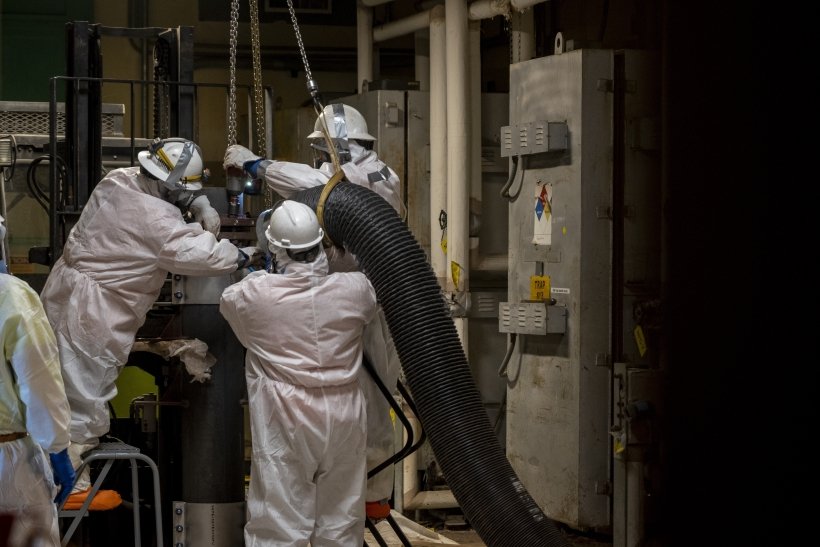During a meeting last week in Covington, Ky., Bradburne noted that the DOE’s Office of Environmental Management “is not only addressing the legacy of the past but is enabling U.S. jobs, U.S. energy, and U.S. security for today and for the future. In doing so, EM contributes to the goal our new Energy Secretary Chris Wright has laid out to usher in a new golden era of American energy dominance.”
He added, “The communities around the Portsmouth and Paducah sites are primed to be a part of it as we transform liabilities into opportunities for the future.” No details of the opportunities were reported by the DOE.
The meeting—the Energy, Technology & Environmental Business Association Business Opportunities Exchange—drew about 200 attendees.
The work: Bradburne outlined recent cleanup accomplishments at the two sites. At Portsmouth, in Pike County, Ohio, the first of the site’s three former enrichment process buildings has been demolished and the second will be torn down later this year. At Paducah, in Paducah, Ky., 14 excess facilities have come down, including the site’s former fire water tower, which at 300 feet was the tallest structure at the site. In addition, deactivation work is underway at the first of Paducah’s four former enrichment process buildings to prepare for its eventual demolition. At both sites, progress continues on converting cylinders of depleted uranium hexafluoride material from past enrichment operations for reuse or disposal.
Unified: A key factor in the PPPO’s cleanup progress, according to Bradburne, is the use of a “One PPPO” approach to manage cleanup activities at the two sites as a single integrated enterprise, which has enabled the sharing of lessons learned and helps drive innovative approaches.
One such example is the PPPO’s “Decision 2029” strategy to help streamline regulatory decision-making for cleanup at Paducah, Bradburne said. This approach, on which the PPPO is currently working with federal and state regulators, has the potential to cut the number of regulatory decision documents needed from more than 50 to just five.
“More importantly, it has the potential to significantly jumpstart the Paducah cleanup and help empower the surrounding communities as they look to their future,” he said.








